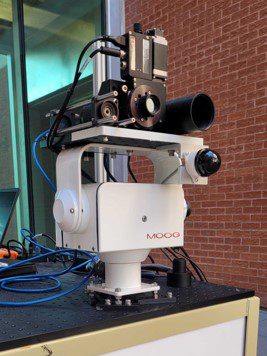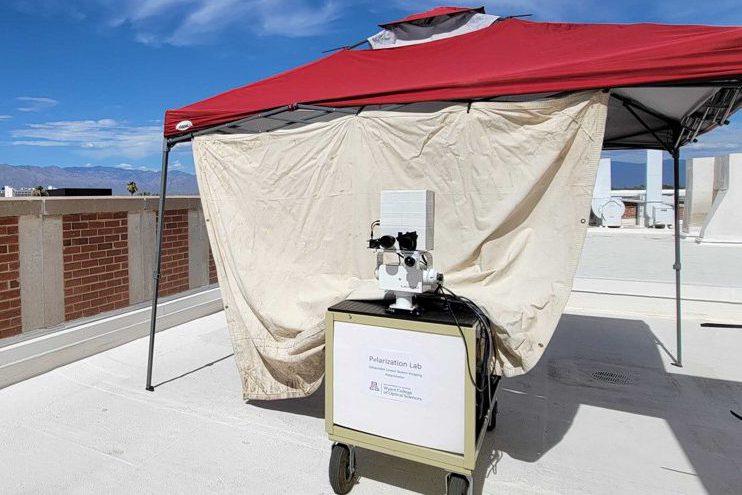Ultraviolet Linear Stokes Imaging Polarimeter (ULTRASIP)
PHD Student: Clarissa DeLeon
Alumnus: James Heath
Legacy: ULTRASIP was originally designed to enhance the detection of optically thin clouds (e.g. cirrus clouds). This project era was part of Mr. James Heath’s Master’s Thesis and included collaboration with Dr. Reed Espinosa and Dr. Dong Wu from NASA Goddard Space Flight Center. ULTRASIP was then redesigned for work relating to atmospheric aerosols. Explore [1]
for why aerosols are important.
Current Research: ULTRASIP was redesigned to enable ground-based characterization of sky polarization. In particular mapping the polarization neutral points, these are points in the sky of completely random polarization that are a product of multiple scattering effects. Therefore, their positions relative to the Sun depend on wavelength, aerosol amount, and time of day. This project aims to determine if changes in the position of the sky polarization neutral points can act as an alert of increased aerosol loading even if the aerosols are outside the field of view of the camera. For more information on this project, see the OSF page [3].


Above images show the ULTRASIP instrument up-close (left) and deployed on the rooftop of Meinel Optical Sciences Building (right)

